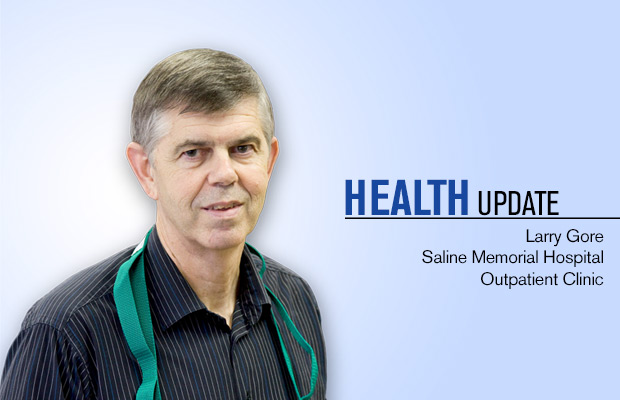Health Update: The Mechanics And Prevention Of Sports Injuries

In my previous life as a high school coach, I once attended a coaching clinic where the legendary Bobby Knight was our instructor. This was in Dallas and he was working with some area college basketball players as he was also teaching us. He stated, “Everyone wants to win, but not everyone is willing to prepare to win.” Then he proceeded to yell and scream at those guys like they were his own players, but that’s another story.
For the last 15 years, I have worked as a physical therapist at the outpatient clinic at Saline Memorial Hospital, and I have had many opportunities to work with athletes of all ages. There has been a definite upward trend to “prepare to win” in our area, as I have seen increasingly younger children coming to therapy for sports injuries that have occurred in sport specific training and competition. What I want to do in this article is to try to explain the mechanics of these injuries and how to reduce them.
Developmentally, there is a great difference between a 12 year-old and 17 year-old student athlete. These younger players tend to have greater joint laxity than a more mature child, lower bone density, and less ability to respond to strain without injury. I often encounter students that are too young to perform training that was developed for a more mature body or an elite level athlete. Just because a well-known professional athlete flips tractor tires does not mean anyone can or should do it.
Mechanically, a joint needs to be able to maintain dynamic stability for the body to produce efficient mobility. Stability is gained ideally from fine motor control. The center of movement in the joint within is called “neutral”. Neutral is the optimal position of stability and mobility that is least stressful, and produces the greatest speed and power with a balanced strain to the soft and hard tissues of the body.
When a joint is exposed to excessive stress, it may move from the safe neutral position to a passive stability, (think bone-on-bone) where this strain may produce injury, or hypermobility of the joint. Often a chronic hypermobility occurs and causes decreased skill and increased pain. Something as simple as throwing a baseball over a period of time will result in dysfunction if the associated joints are not maintaining a dynamic neutral in the execution of this motion.
You may now be asking the question, “How does a body attain neutral to reduce injury and improve performance?” It begins with core stability. If someone is not able to be stable in the core when performing a skill that requires speed and power, joint stress will result. This stress may manifest in back pain, weakness, or decreased precision of movement in peripheral joints and muscles.
Another stability question has to be answered; “What strategy does the body use to stabilize an extremity (arm or leg) to the trunk?” Example, if an athlete has decreased scapular stability in the throwing motion, or has an abnormal scapular-thorasic alignment, then stress will occur in the SC (scapulo-clavicular), AC (acromio-clavicular) and/or anterior gleno-humeral (shoulder) joint.
Often muscle strain occurs when a dysfunction requires a muscle to perform a skill as a stabilizer, but it’s designed to be a prime mover of a long bone (or visa-versa). An example would be a hamstring muscle (mover) strain that results from gluteus maximus (stabilizer) weakness or from an abnormal motor pattern related to a spinal dysfunction or abnormality of the hip.
To reduce the potential of injury to your young athlete, or yourself, I recommend the following:
Age Appropriate Training
Appropriate stress results in increased strength and skill, excessive stress per level of maturity results in movement dysfunction, pain, and injury.
Play
Everyone, at any age, needs to play. I don’t mean more competition, but just fun. Low structure, low competition, high creativity. This is a natural way of stabilizing and cross training our bodies.
Rest
All athletes need down time. Sometimes I tell my over stressed patients, instead of going to another training session on Saturday morning, stay home, eat a bowl of cereal and watch some cartoons.
Seek Professional Help
If you are seeing increasing pain and decreasing performance, there may be some structural issues that can be corrected. Go to a doctor or physical therapist that understands the details of body mechanics, motion analysis, and what to do correct to correct dysfunctional patterns.
Larry Gore is a Physical Therapist at Saline Memorial Hospital in Benton.









0 comments